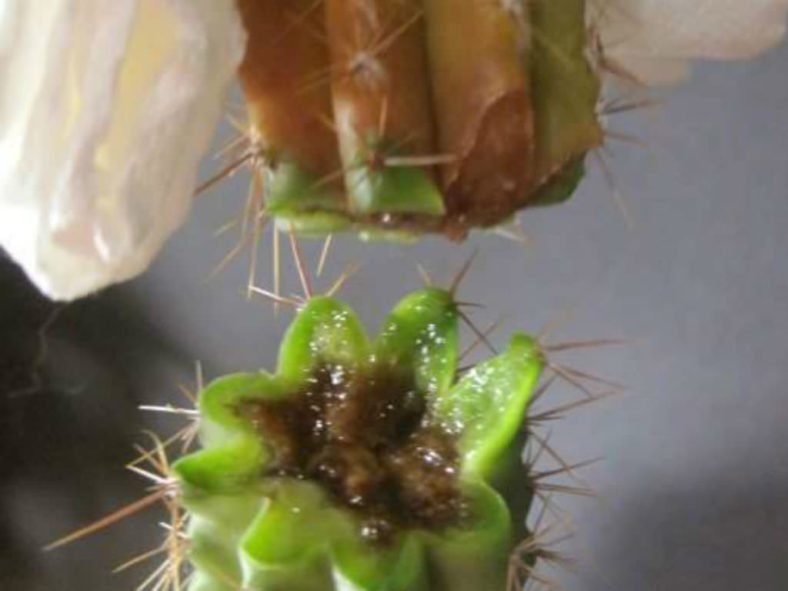Cacti are remarkably durable and low in maintenance. They need little more than sunlight, well-drained soil, and rare moisture. As a result, the pests and problems common to the plant group are minimal and usually easy to surmount. Cactus problems may range from sucking pests like whitefly to common rots from bacteria or fungal diseases. A soft, mushy cactus is one of the telltale signs of a problem.
The arid gardener may ask, "Why is my cactus going soft?" Disease, cultivation, and improper site and ambient conditions are likely causes.
Cacti generally need little moisture. They thrive in sunny locations between 70°F and 75°F (21°C and 24°C) and require little supplemental nutrients. Potted plants need drainage holes and a soil mix with plenty of grit. In-ground plants have similar requirements.
As with any plant, cacti can become diseased or damaged. A common problem is soft spots in the flesh of the plant. These may be discolored or corky around the spot, and the center is mushy and wet. The reasons for such spots may be disease or mechanical injury to the pads and stems of the cacti. Cactus rot issues must be dealt with quickly to prevent spread to the rest of the plant and serious loss of vigor, which may become permanent.

Problems with Fungal and Bacterial Diseases
Bacteria and fungi are introduced to the plant from openings in the flesh. The open areas may be from insect or animal activity, damage from inanimate objects, or heavy weather, such as hail. The injury is unimportant, but fungal spores or bacterial damage are crucial.
Warm, moist conditions accelerate the production of fungi spores and increase bacterial production. You will see soft, mushy cactus once the organism takes hold of your plant. Symptoms to watch for include small sunken spots, discolored scabs, round soft areas surrounded by fruiting bodies, and black or other colored dots on the surface of the cacti skin. You may even notice some oozing of your cacti.
Treating
Cactus problems that have gotten into the root usually result in a slowly dying plant, while topical issues in the upper body can be treated easily. Most cacti respond well to excising the diseased tissue. Use a sharp, sterile knife to dig out the damaged flesh and allow the hole to dry out. Do not water overhead as the wound closes.
If the damage has infected the roots, there is very little you can do. You can try to repot the plant, remove diseased soil, and replace it with sterile soil. You should wash the roots off well before replanting in a fresh potting medium.
A soft, mushy cactus can also be saved by taking cuttings and letting them root for a fresh new plant. Allow the cut to callus over for a few days before inserting the cutting into the sand. Rooting the cutting may take several weeks. This propagation method will produce a healthy cactus that is the same as the parent plant.
Source: gardeningknowhow.com
Links
- Succupedia: Browse succulents by Scientific Name, Common Name, Genus, Family, USDA Hardiness Zone, Origin, or cacti by Genus